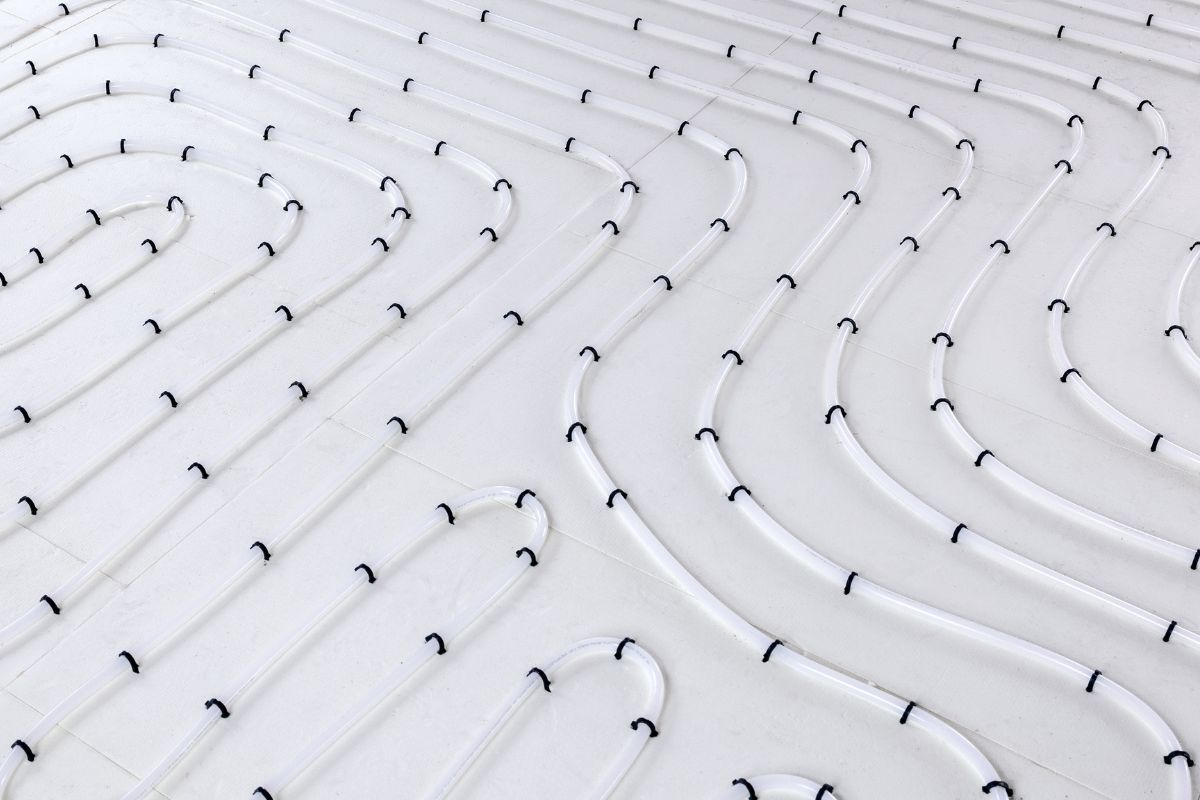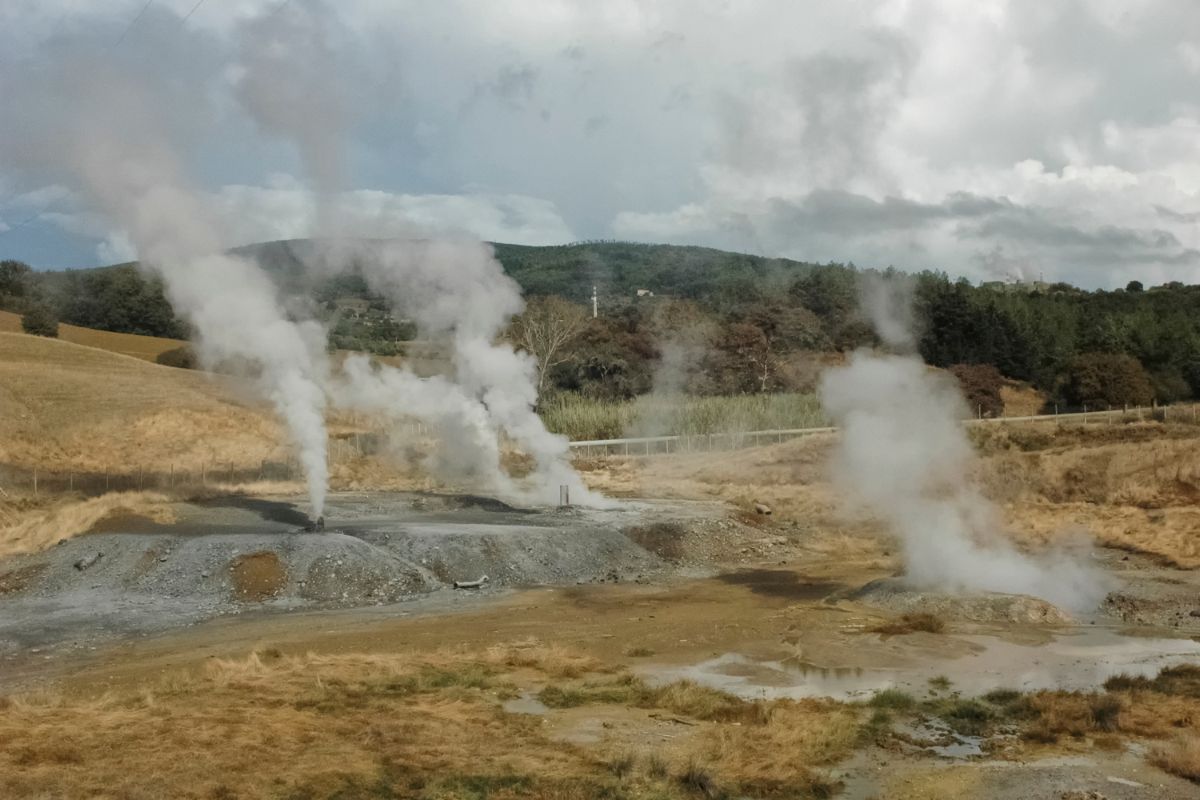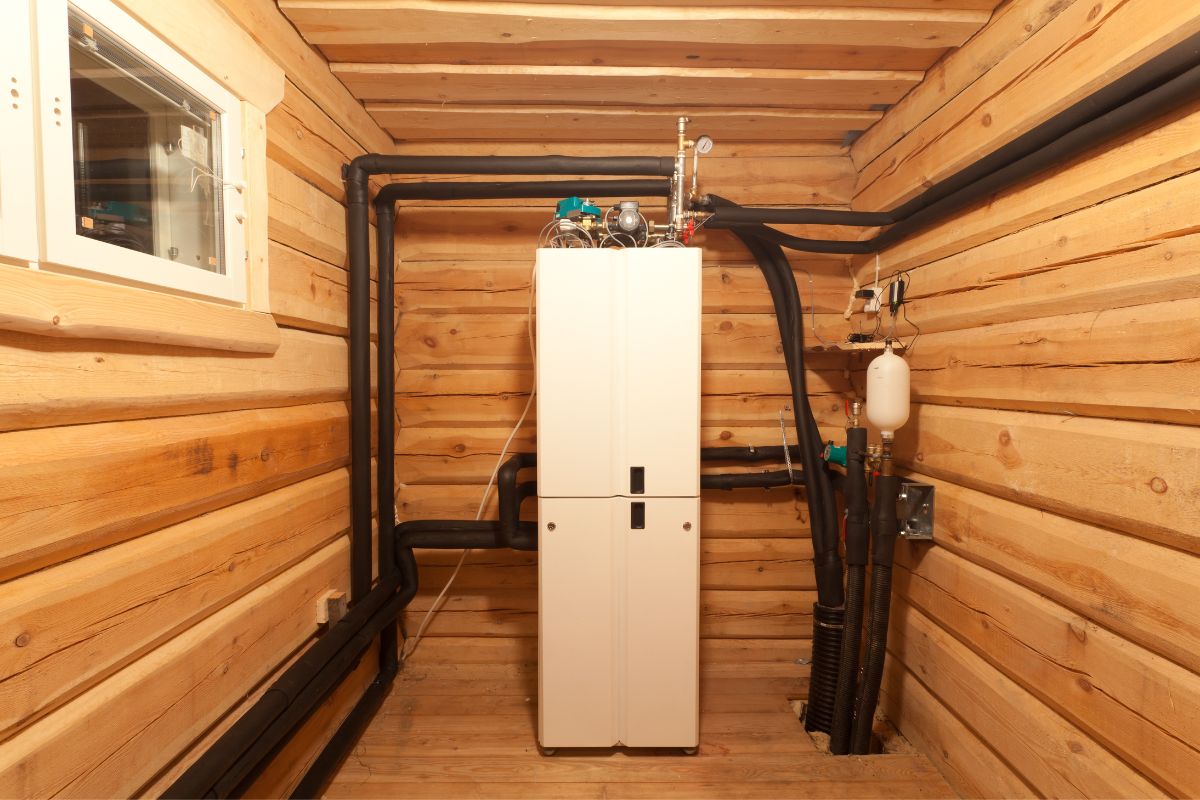The world is finally starting to wake up to the potential of geothermal energy as an abundant and green power source, and thanks to geothermal heat pumps, it’s not just specialized power plants near tectonically active land that can get in on the action.
These pumps are designed for residential use, allowing you to source some of that sweet, green energy from under your feet to keep your home warm in the winter and cool in the summer, all while taming your ferocious energy bills!
How Do Geothermal Heat Pumps Work?
Have you ever wondered why bears hibernate in caves?
Well, as well as providing shelter from rain and snowfall, they also help to regulate their temperature during the cold seasons, as beneath the surface of the ground (roughly 4–10 feet), there’s a steady heat that typically falls between 45 and 75 °F.
Geothermal heat pumps rely on the stability of these subterranean thermals to control the climate within your home. Unaltered by the summer sun or the snows of winter, this constant thermal band beneath the surface of the Earth always sits in opposition to the extreme air temperatures outside.
During the peak of summer, the subsurface temperatures are cool enough to keep the heat out of your home, and during the peak of winter, these temperatures are warm enough to keep the cold at bay.
Where Does This Heat Come From?
The heat beneath the Earth’s surface is generated by two processes. The first is the natural cooling of the Earth from its super hot creation. This heat is slowly being released from deep in the Earth, supplying the perfect opportunity for us to swoop in and grab some for ourselves.
The second heat source is the steady decay of radioactive particles in the earth, meaning, below the surface, the rocks themselves are like little heaters, warming any fluid that crosses their path.
How Do Geothermal Heat Pumps Access Geothermal Energy?
There are a few different installation formats, but they all follow the same general principles to extract thermal energy from underground.
Besides pond/lake loops, they all start with the digging of a large trench on your property. In this trench, a pipe loop system will be installed and subsequently buried.
This pair of vertical pipes connect the subsurface loop to the pump, which will have to sit somewhere sheltered on your property.
The pump pushes a fluid around the loop in order to exchange heat with the soil. The fluid then returns to the pump and transfers its newly acquired heat to a duct system that blows thermally altered air through the building like a typical forced air climate control system.
Geothermal Heating Pumps: What Are Your Options?
All geothermal heat pumps are more or less the same. What differs is the type or orientation of the loop installed beneath the ground. Three of your options are known as closed-loop systems, while one is an open-loop system.
Closed-Loop Systems
A closed-loop system is local to your house and your house alone. The loop is completely discrete, meaning it’s unattached to any larger public infrastructure.
Horizontal Loop Systems
The loop system of this installation type is set up horizontally in comparatively shallow trenches in the ground (typically between 4 and 6 feet deep).
This is one of the most space- and wallet-friendly options, especially if you choose the coil approach, as it allows for a larger loop in a compact space.
Vertical Loop Systems
Vertical loop systems are buried between 100 and 400 feet deep, with roughly 20 feet between each pipe. This is the perfect orientation for larger commercial properties as they offer more spatial flexibility — Vertical loops can be implemented in areas where the soil is too shallow for trenching.
Pond/Lake Loop Systems
A pond/lake loop is the most affordable option if you have a suitable body of water on your property. These systems utilize the pre-existing depth of the pond or lake to house the loop, which is then linked to the pump by a supply line, thus reducing the effort required to install them.
Unfortunately, though, the body of water in question must meet a few minimum requirements in terms of quality, depth, and volume.
Open-Loop Systems
An open-loop system is linked up to outside infrastructure in order to use surface body water or well water as the heat exchange fluid (closed-loops systems tend to use antifreeze).
Once the water has passed through the pump, it will be discharged either through a recharge well, a standard well, or via surface discharge.
What About Hybrid Systems?
There are also a number of hybrid systems around that combine the geothermal potential beneath your home with more traditional energy formats.
For example, a hybrid system may incorporate both a sub-surface heat exchange matrix and an above-ground cooling tower into the loop, providing extra cooling ability on absolute scorchers.
How Much Do Geothermal Heat Pumps Cost?
Depending on a few variables, such as installation type, soil conditions, and plot size, you should expect to fork out between $10,000 and $30,000 for a geothermal system.
Granted, that’s a daunting buy-in, but seeing as geothermal systems can reduce energy consumption by between 25 and 50%, they do offer an ROI over a long enough period — We’re talking 5–10 years.
So, if your question is whether a geothermal heat pump is a worthy investment, I’d have to say, yes, absolutely. Are set-up fees steep? Yes, but you’ll be saving money in the long run.
Final Thoughts
Geothermal heat pumps are miraculous bits of technology that can harness the thermal power from under our homes and dramatically cut our energy consumption, which is great for our bank accounts and the planet.
The beautiful thing about geothermal energy (aside from the money-saving potential) is that it’s a consistent source of climate control power.
Unlike wind and solar energy systems that rely on very specific weather conditions, you can always count on geothermal energy, come rain or shine.


